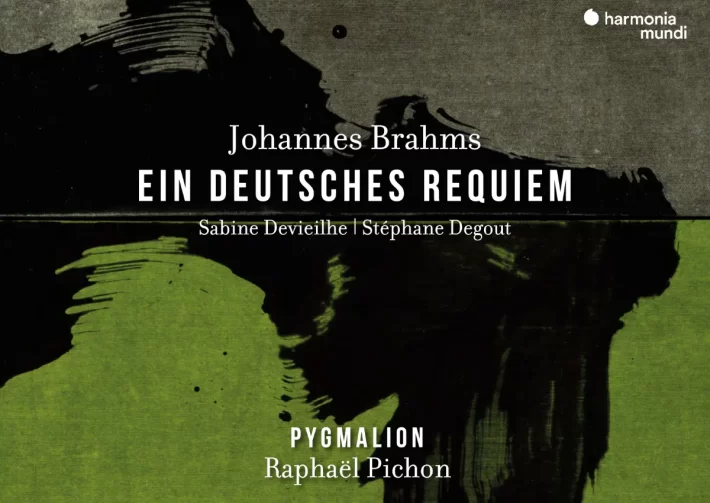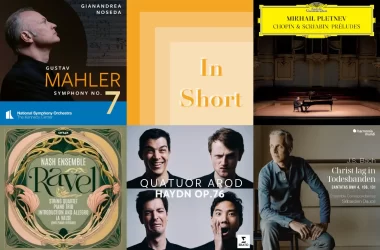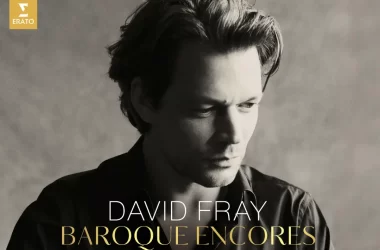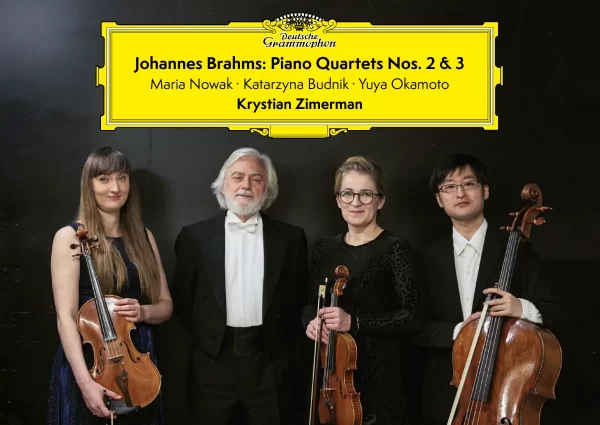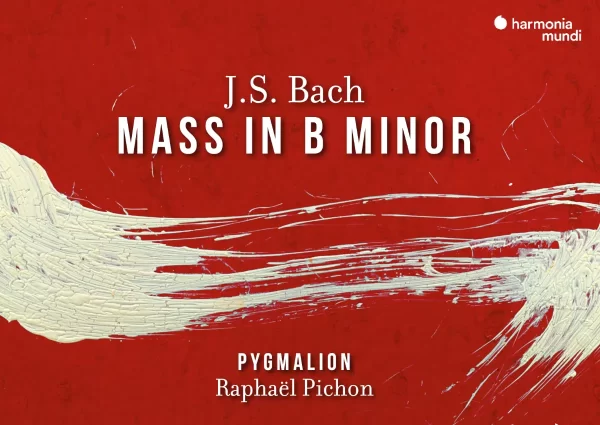Historically informed performances of Brahms’s Ein deutsches Requiem are hardly new, but listening to this recording by Pygmalion under Raphaël Pichon, one might ask, “Are we really doing this again?” The string players sound overly eager to showcase their non-vibrato playing in the opening phrases, and in Wie lieblich sind deine Wohnungen (track 4, 0’40”) the orchestral line under the choir is shaped with a deliberate lack of sentiment.

Without rehashing past arguments, it’s worth noting that recent studies of Brahms’s letters show that while working with the Meiningen Orchestra on the Third Symphony, he specified only one or two passages for strings to be played ‘…completely hushed. Notes to be played without vibrato or slides…(portamento)…‘ He did not request his entire score be played without vibrato-a musical device used lavishly in the 19th century. Nor should it be banned from the entire Romantic repertoire, as some conductors and scholars have suggested. Even when taking this route, surely there is a more atmospheric way of presenting the soprano in the fifth movement, as achieved by conductors like Suzuki or Gardiner.
Pichon uses Pygmalion’s regular forces of 37 singers, a modest size compared to other recorded versions, historically informed or not. One might expect an intimate performance, yet the ensemble seems to relish the dramatic moments far more than the inward ones. They often over-deliver, such as in Herr, lehre doch mich (track 3, 5’20”), where the sheer volume and fast tempo threaten to spiral out of control. The crescendo at 6’20” of this movement is technically impressive, but does it serve the arc of a spiritual work? Does the contrapuntal writing that follows really require such haste? In the second movement, the timpani is so punchy, the work could almost be mistaken for a piece for choir, orchestra, and timpani obbligato.
Having praised this group’s previous albums on these pages, I revisited their wonderful recordings of Mozart’s Requiem and Bach’s St. Matthew Passion and recognized the same appetite for driving climaxes. These moments are sung in a style more appropriate to the crowd scenes of a Passion than to a mid-19th-century choral work. The group has recorded Brahms before on their Rheinmädchen album, but the intimate nature of the Four Songs, Op. 17 was far more suitable to their approach. It’s as if they haven’t made the interpretive leap from the Baroque and Classical repertoires they so admirably perform into the Romantic soundworld.
The engineering doesn’t help matters. The choir is recorded closely, with individual singers in each section poking out, which prevents the formation of a blended choral sonority achieved by Gardiner or Suzuki. I have also written positively about Sabine Devieilhe’s row of masterful albums in recent years, but as pleasant as her singing is in Ihr habt nun Traurigkeit (track 5), her style is more suited to a Bach Cantata aria than to Brahms’s reflective lyricism. Stéphane Degout’s delivery is one of the recording’s more positive elements; he sings dramatically without becoming operatic. Yet he too is occasionally hustled by the tempo choices.

Raphaël Pichon conducts Pygmalion (image: ©️ Chris Christodoulou)
Pichon sets a blistering pace in Wie lieblich sind deine Wohnungen (track 4), introducing a dance-like jumpiness upon reaching “mein Leib und Seele” (“my heart and my flesh”, from 2’00”), where a strangely prominent horn jumps out almost comically. Wolfgang Sawallisch also underlined the final “Hölle, wo ist dein Sieg?” (“O grave, where is thy victory?”) in the sixth movement, but Pichon goes further by distinctly separating each syllable around 5’10”, which draws attention to gesture over line.
In the right hands, the final movement can sound like a peaceful culmination; in others, it can feel dull and anticlimactic. Pichon drives the final bars of the sixth movement so forcefully and begins the finale so quickly that the return of the work’s opening theme (track 7, 7’09”) feels plain and underwhelming.
Listeners who enjoyed Pygmalion’s previous Bach and Mozart recordings may relish the same characteristics applied to the German Requiem and be more convinced by this interpretation. If you wish to hear Brahms’s masterpiece as a dramatic stage work, this will suit you. For this listener, however, the approach often felt misplaced and ill-suited to the profound spirituality this work entails.
The writer thanks Styra Avins for her essay “The Excellent People of the Meiningen,” which provided details of Brahms’s Meiningen visit and remarks.
Recommended Comparisons
Gardiner | Suzuki | Klemperer | Sawallisch

Album Details |
|
|---|---|
| Album name | Ein deutsches Requiem |
| Label | Harmonia Mundi |
| Catalogue No. | HMM902772 |
| Artists | Sabine Devieilhe (soprano), Stéphane Degout (baritone), Pygmalion, Raphaël Pichon (conductor) |
Included with an Apple Music subscription:
Available on Presto Music
Latest Classical Music Posts

